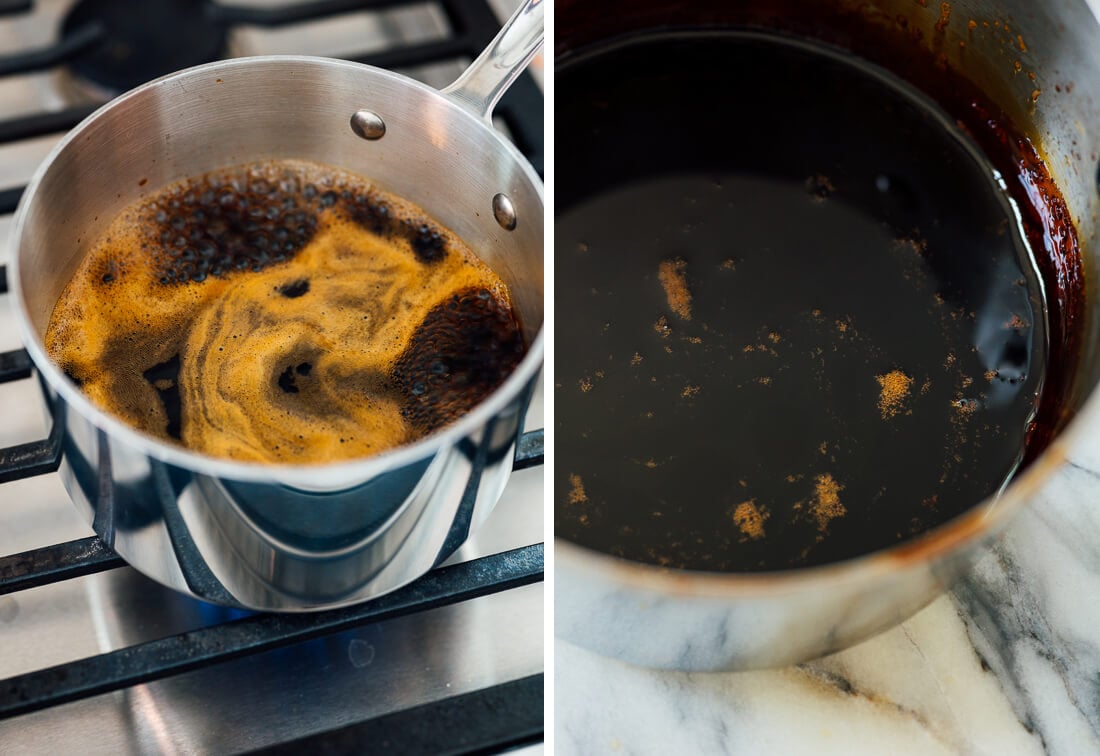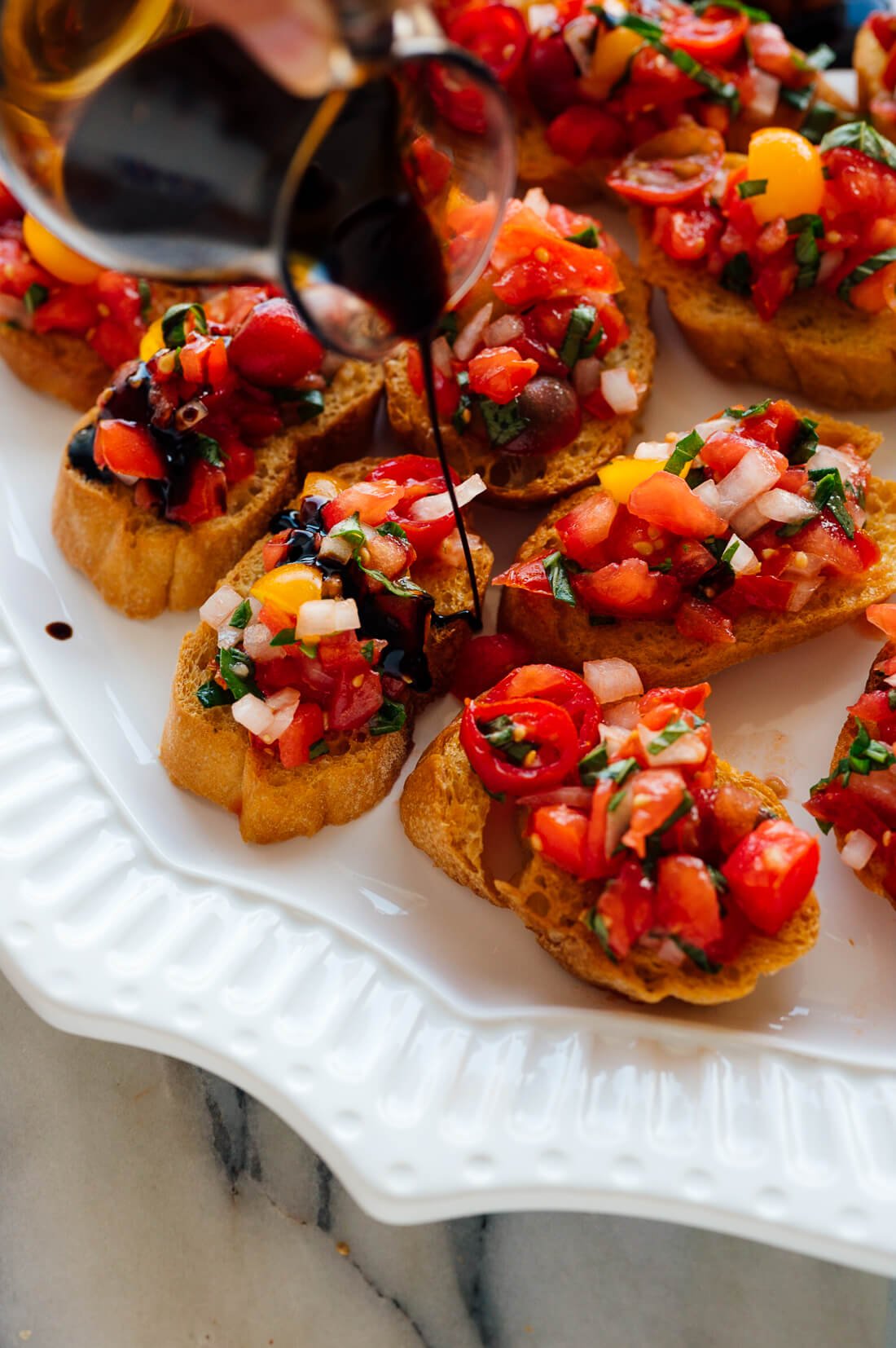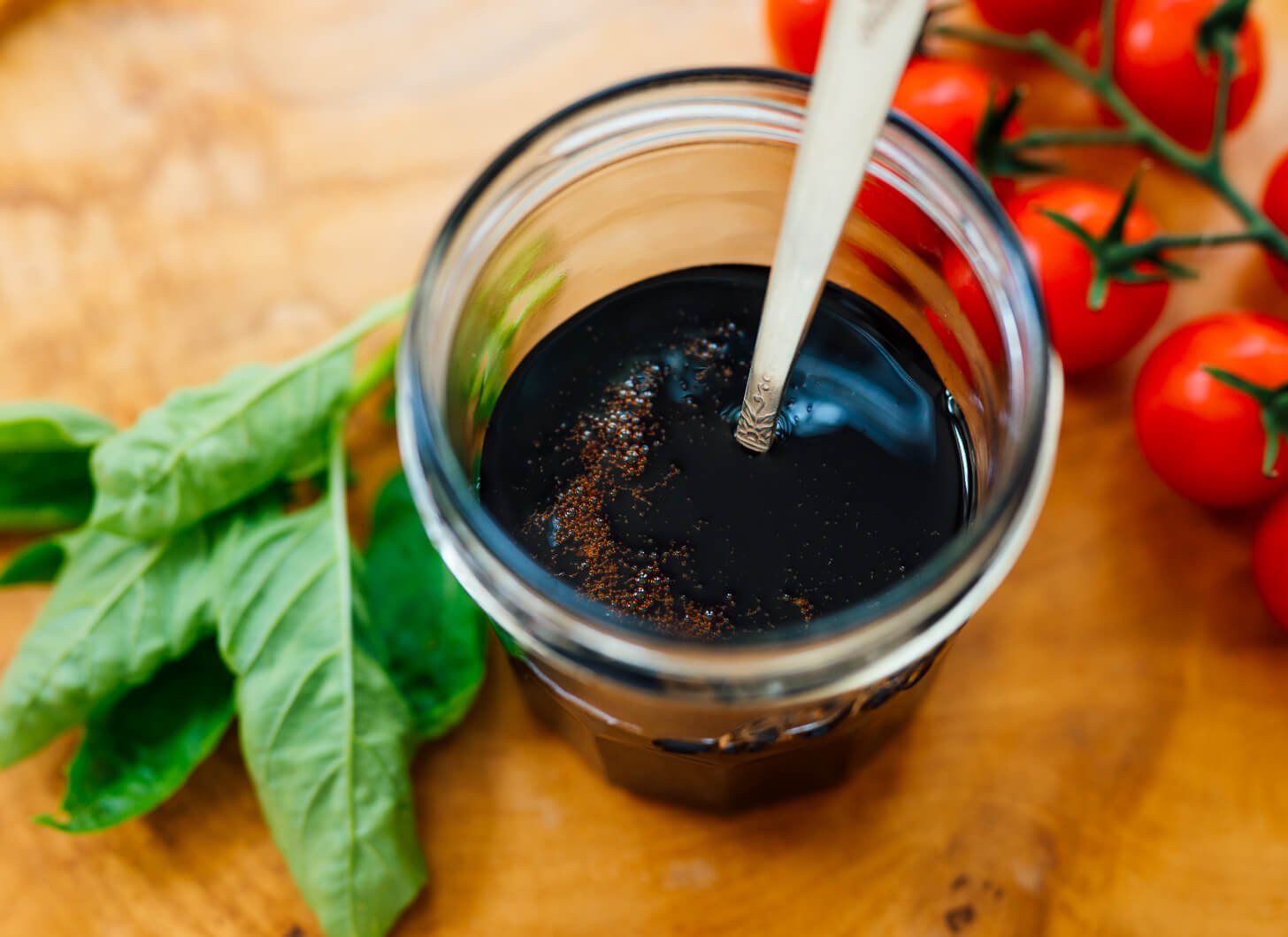Balsamic Glaze Recipe (Balsamic Reduction)

Did you know that you can turn basic balsamic vinegar into pure magic? Balsamic glaze is condensed balsamic vinegar that yields a beautiful dark, glossy drizzle with a bold, complex flavor. It’s also know as balsamic reduction… or as I like to say, balsamic magic.
It has a dark, almost honey-like sweetness and complexity, with a hint of residual tartness. By reducing the balsamic vinegar, you decrease the sourness and make the sugars even more pronounced. The flavor is difficult to describe because it is uniquely its own.
Balsamic glaze is marvelous drizzled over ripe summer produce, like perfect red tomatoes, peaches or melon. Add some olive oil, flaky salt, and basil for a beautiful summer salad. I also love it over greens, roasted vegetables and homemade pizzas. You’ll find even more uses below, but the possibilities are up to your own creativity.

Now, if you’re already buying true aged balsamic vinegar that’s thick and syrupy, there’s no need to make balsamic glaze. It’s already there. My favorite affordable, thick balsamic vinegar is this one by Napa Valley Naturals (affiliate link/look for the bottle with “25 stars” on it).
If you have a bottle of basic runny balsamic vinegar—the kind that I grew up with—you can turn it into balsamic glaze in under 20 minutes. It keeps well in the pantry nearly indefinitely, so it’s a worthwhile little project. You’ll be glad to have it!

How to Make Balsamic Glaze
Balsamic glaze is quite simple to make at home. You’ll find an instructional video, tips and recipe below, but basically, you’ll gently simmer runny balsamic vinegar until it has reduced by about half.
Watch How to Make Balsamic Glaze

Balsamic Glaze Tips
- Start with a decent runny balsamic vinegar. It needn’t cost a lot, but watch out for any strange additives in the ingredients list, like caramel coloring. I used Whole Foods 365 brand.
- Use a small, heavy-bottomed pot. If your pot is too large, your vinegar can evaporate too quickly and scorch.
- Run your exhaust fan. This recipe will make your kitchen smell like vinegar, and running your exhaust fan and cracking a window will help reduce the smell.
- Reduce the heat as necessary to maintain a gentle simmer. As the volume of liquid decreases, continue dialing down the heat.
- Stir often and keep an eye on the stove. It’s very easy to get distracted while making this glaze. Keep an eye on it so the vinegar doesn’t bubble over the pot or scorch over high heat.

Uses for Balsamic Glaze
Balsamic glaze is versatile. Balsamic glaze is wonderful drizzled over roasted vegetables, pizzas and flatbreads, and appetizers like the Tomato Basil Bruschetta shown above.
It also makes a stellar salad dressing. Start with a light drizzle of balsamic glaze, followed by a drizzle of good olive oil, finished with a sprinkle of flaky sea salt. This setup is great on fresh greens, as shown on this Super Simple Arugula Salad, as well as tomato, peach or watermelon salads. Try adding a drizzle on this Caprese Salad!
More recipes featuring balsamic reduction on Cookie and Kate:
Please let me know how your balsamic reduction turns out in the comments. I’m eager to hear how you use it.

Balsamic Glaze (Balsamic Reduction)
- Author:
- Prep Time: 1 minute
- Cook Time: 12 minutes
- Total Time: 13 minutes
- Yield: ½ cup 1x
- Category: Sauce
- Method: Stovetop
- Cuisine: Italian
- Diet: Vegetarian
Make your own balsamic glaze, also known as balsamic reduction, with this simple recipe! It’s easy to make with regular balsamic vinegar. Use a minimum of 1 cup vinegar for this recipe—it will yield half as much balsamic glaze (if you start with 1 cup vinegar, this recipe will yield ½ cup balsamic glaze).
Scale
Ingredients
- 1 cup (or more) runny balsamic vinegar
Instructions
- Bring the vinegar to a boil in a small, thick bottomed saucepan over medium heat.
- Reduce the heat to maintain a gentle simmer and cook, stirring often, until the vinegar is reduced by half, about 10 to 15 minutes (or considerably longer if starting with more than 1 cup vinegar). You will likely need to dial down the heat over time.
- Allow the reduction to cool. Drizzle as desired! Transfer leftover glaze to an air-tight jar and store in the pantry for up to 6 months.
▸ Nutrition Information
Did you make this recipe?


